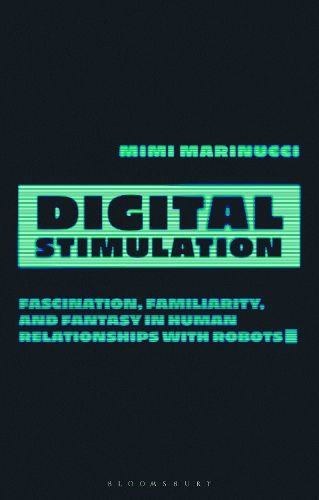Readings Newsletter
Become a Readings Member to make your shopping experience even easier.
Sign in or sign up for free!
You’re not far away from qualifying for FREE standard shipping within Australia
You’ve qualified for FREE standard shipping within Australia
The cart is loading…






Digital Stimulation considers the subject of intimacy, including sexual intimacy, between humans and machines, both in the imagination and in reality as well. In fiction and in fact, social robots are frequently gendered as women. It is therefore important to address their potential to reinforce, or perhaps to reinvent, existing attitudes and expectations about gender, including nonbinary and transgender identities, as well as race, class, disability, and other aspects of identity.
This book provides an overview of the history of robots depicted in popular culture, especially science fiction, as well as an overview of the history of sex toys, including blow up dolls and, more recently, lifelike sex dolls. This invites an examination of the current and ongoing development of robots designed explicitly for intimate engagement with humans. The book explores positive (and often overly optimistic) attitudes, as well as negative (and often overly sensational) negative attitudes about the potential impact of robots and artificial intelligence. Finally, Digital Stimulation considers the possible ways in which future robot design might consciously disrupt the limitations of a binary system of gender, sex, and sexuality.
$9.00 standard shipping within Australia
FREE standard shipping within Australia for orders over $100.00
Express & International shipping calculated at checkout
Digital Stimulation considers the subject of intimacy, including sexual intimacy, between humans and machines, both in the imagination and in reality as well. In fiction and in fact, social robots are frequently gendered as women. It is therefore important to address their potential to reinforce, or perhaps to reinvent, existing attitudes and expectations about gender, including nonbinary and transgender identities, as well as race, class, disability, and other aspects of identity.
This book provides an overview of the history of robots depicted in popular culture, especially science fiction, as well as an overview of the history of sex toys, including blow up dolls and, more recently, lifelike sex dolls. This invites an examination of the current and ongoing development of robots designed explicitly for intimate engagement with humans. The book explores positive (and often overly optimistic) attitudes, as well as negative (and often overly sensational) negative attitudes about the potential impact of robots and artificial intelligence. Finally, Digital Stimulation considers the possible ways in which future robot design might consciously disrupt the limitations of a binary system of gender, sex, and sexuality.